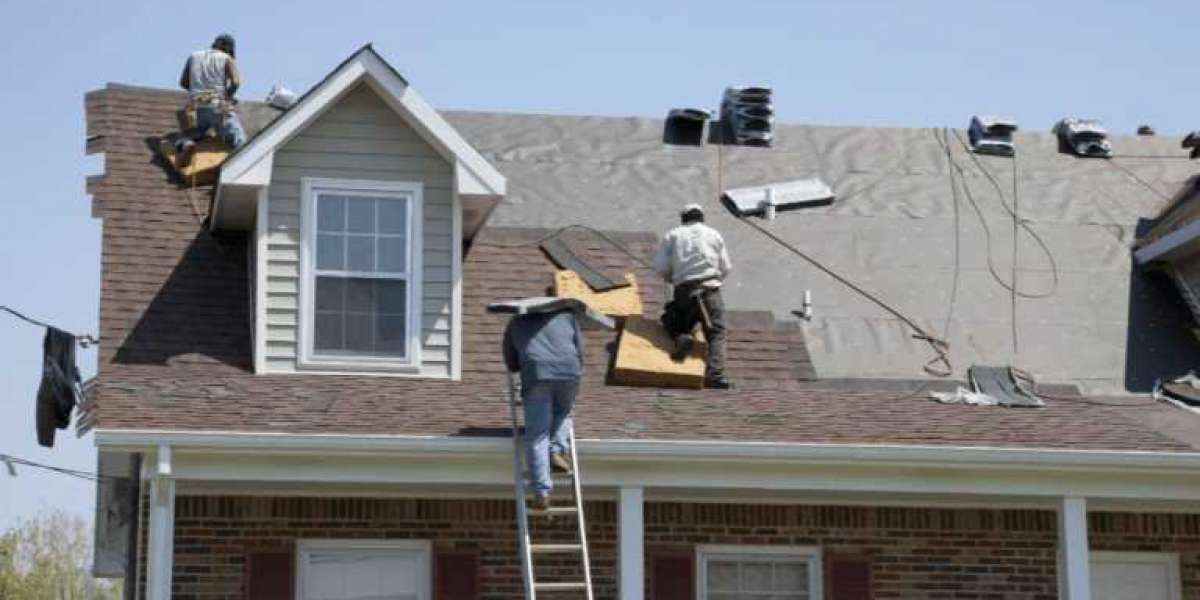Your roof works silently around the clock, protecting your home from rain, wind, sun, and snow. But just like any part of your home, it doesn’t last forever, and when small issues go unnoticed, they can turn into expensive repairs or even total replacements. That’s why learning to spot the early signs of roof damage is essential for homeowners who want to avoid costly surprises.
In this comprehensive guide, we’ll walk you through the most common warning signs, how to inspect your roof safely, and when to call a trusted professional like Burton Roofing. Let's dive in before a minor issue becomes a major headache.
Why Catching Roof Damage Early Matters
Many homeowners ignore their roof until something obvious—like a leak or missing shingles—forces them to take action. But by the time water drips from your ceiling, significant damage may already be done.
Spotting roof damage early helps you:
Avoid high repair costs
Extend the life of your roof
Protect your home’s interior
Prevent mold and structural issues
Maintain your home’s value
Preventive maintenance is much more affordable than emergency repairs. And the good news? You don’t need to be a roofing expert to recognize early red flags.
1. Missing or Damaged Shingles
This is one of the most visible and common signs. Shingles can crack, curl, blister, or go missing entirely due to high winds, rainstorms, or age. Damaged shingles expose your roof's underlayment, increasing the risk of water infiltration.
What to look for:
Curled edges or corners
Cracks or splits in shingles
Bald spots where granules are missing
Entire shingles that have blown off
Tip: Use binoculars to check from the ground or inspect after a storm. If you spot multiple damaged shingles, it’s time to call Burton Roofing for a closer look.
2. Granules in Gutters or Downspouts
Asphalt shingles have a grainy texture on top, which protects them from sun and rain. Over time, these granules begin to shed. While a little granule loss is normal, seeing a large volume in your gutters could mean your shingles are deteriorating fast.
Why this matters:
Without granules, shingles can’t effectively reflect UV rays, and that leads to faster wear and potential leaks.
3. Water Stains or Interior Leaks
Notice a brown stain on your ceiling? That could be the first sign of a leaky roof. Water spots, damp patches, or mold on your attic ceiling or walls are often the result of slow, hidden leaks.
Common causes include:
Faulty flashing around vents or chimneys
Ice dams or backed-up gutters
Cracked sealant or punctures
If you catch it early, you can fix the source before it destroys insulation, drywall, or wood framing.
4. Sagging Roofline
Your roofline should be straight and level. If it begins to dip or sag, it’s a sign that the underlying support structure is compromised—often due to water damage or long-term rot.
What to do:
This is a serious red flag. A sagging roof may collapse if left unattended. Schedule an inspection immediately with a licensed contractor like Burton Roofing.
5. Daylight Through the Attic
Head into your attic during the day and turn off the lights. Can you see sunlight peeking through the roof boards? If so, that means water can get through, too.
Also check for:
Signs of moisture or damp insulation
Musty smells (indicative of mold or mildew)
Water stains on the rafters or ceiling
Even small pinholes in the roof deck can let in water and lead to bigger problems over time.
6. Damaged Flashing
Flashing is the thin metal material installed around roof features like chimneys, skylights, and vents. It’s there to keep water from seeping into joints and edges.
Signs of bad flashing:
Rust or corrosion
Peeling or missing caulking
Loose or bent metal pieces
Flashing failures are among the most common sources of roof leaks and are often overlooked during a DIY inspection.
7. Moss, Mold, or Algae Growth
A little moss might seem harmless or even charming—but it’s not. Moss holds moisture against your roof and can cause shingles to lift or deteriorate.
How to spot it:
Green patches on shaded areas of the roof
Black streaks (usually algae)
Musty odor from the attic
Burton Roofing recommends gentle, non-pressure cleaning for removal and professional evaluation if the growth is widespread.
8. Increased Energy Bills
A spike in your heating or cooling bills could be due to poor insulation or ventilation in your attic, often caused by roof damage.
How your roof affects energy efficiency:
Gaps or holes let air escape
Damaged insulation allows temperature shifts
Poor ventilation causes heat buildup in summer
A roofing pro can inspect your attic and roof deck for energy leaks and suggest cost-saving improvements.
9. Storm Damage
Hail, wind, and heavy rains can wreak havoc on a roof. Even if everything looks fine from the ground, your roof may have hidden bruises or micro-cracks that compromise its integrity.
After a major weather event, check for:
Dents or pits in shingles
Broken tile or slate
Debris or tree branches on the roof
It’s wise to call Burton Roofing for a post-storm inspection to be sure.
10. Aging Roof
Most roofs have a lifespan of 15–30 years depending on the material. If your roof is older and hasn’t been inspected recently, you’re at higher risk for leaks and other failures.
Typical roof lifespans:
Asphalt shingles: 15–25 years
Metal roofing: 40–70 years
Tile or slate: 50–100 years
If your roof is approaching the end of its expected life, it’s smart to start budgeting and planning. Burton Roofing can help you evaluate your options and prioritize any repairs.
How to Inspect Your Roof Safely
You don’t have to climb up a ladder to keep an eye on your roof. Here’s how you can do it safely:
Use binoculars from the ground to scan for shingle damage
Check your attic regularly for signs of leaks or light
Clean and inspect your gutters during seasonal maintenance
After storms, look for shingle pieces in the yard
Schedule a professional inspection at least once a year
When in doubt, leave the climbing to the pros. Roofs are dangerous places to walk, especially if they’re damaged or wet.
Why Work with a Professional Like Burton Roofing?
Even if you're good at spotting problems, it takes a trained eye to assess the true condition of a roof. That’s where Burton Roofing comes in.
With years of experience and a reputation for excellence, Burton Roofing offers:
Free inspections
Expert repairs and full replacements
Storm damage evaluations
Energy-efficient roofing solutions
Warrantied work and transparent pricing
Their team uses industry-leading tools and techniques to detect problems early and offer cost-effective solutions.
Final Thoughts
Your roof is your home’s first line of defense—and spotting problems early can save you thousands in repair bills. Don’t wait until there’s water pouring through the ceiling. With routine checkups and an eye for detail, you can keep your roof strong, your home dry, and your family safe.
Partner with experts like Burton Roofing to inspect, maintain, and protect your investment year-round.
Frequently Asked Questions (FAQs)
Q1. How often should I inspect my roof for damage?
You should inspect your roof at least twice a year—preferably in the spring and fall. Always check it after major storms or wind events. Consider scheduling an annual inspection with a professional like Burton Roofing for a thorough evaluation.
Q2. Can I repair small roof issues myself?
Minor repairs like replacing a single shingle or sealing a small crack might seem easy, but improper fixes can lead to more problems. It’s always safer to consult professionals, especially when safety is a concern.
Q3. How much does a roof inspection cost?
Many roofing companies, including Burton Roofing, offer free or low-cost roof inspections. It’s a smart way to catch early problems before they grow into major issues that require expensive repairs or full replacements.
Need Help? Contact Burton Roofing Today!
Whether it’s time for a routine checkup or you’re seeing signs of trouble, don’t wait. Reach out to the roofing experts who care about your home as much as you do. Burton Roofing is just a call away from peace of mind.








